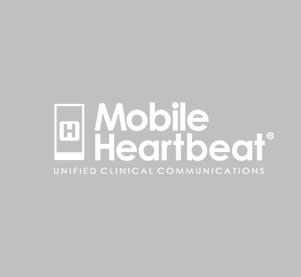If you are like many people today, text messaging is a predominant means of communication. Although convenient, sending a text message as a healthcare provider can be a risky proposition. Fortunately, there are dozens of secure text messaging vendors that provide a solution to that problem. Mobile Heartbeat is one of them.
HIPAA-compliant secure text messaging is a basic core functionality for Mobile Heartbeat, but it doesn’t end there. Mobile Heartbeat is an enterprise-class, mobile clinical communications solution for acute care hospitals and all clinical practitioners. That includes nurses, CNA’s, technicians, and physicians, both inside and outside the four walls. Imagine purchasing a smartphone only for the purpose of texting and making phone calls. It would be like purchasing a laptop only to do word processing. That just doesn’t happen anymore. While there are dozens of secure text messaging apps available today, there are only a few that go beyond texting and take full advantage of all the smartphone has to offer. Smartphones have the capability to become mobile extensions to medical devices, EMRs, nurse call systems and other hospital systems that require critical urgent communications.
The underlying technology that supports clinical communications is a segmented market and is evolving rapidly, becoming much more sophisticated as mobile apps begin to catch up with hardware, middleware and network capabilities in the healthcare provider setting. We’ve gone from yelling at each other down the halls, to antiquated phone handsets (tin can and strings), to Apple iPhones and Android smartphones capable of handling integrated apps that create new dynamic and mobile clinical workflows. These workflows truly mobilize caregivers, putting them back at the patients’ bedside where they belong.
Mobile Heartbeat is a unique solution that does take full advantage of all the capabilities inherent to the smartphone and goes way beyond voice and text. Some have defined this solution as “deep messaging” or “extended messaging” as Tim Gee does in his article on Messaging Middleware Market Segmentation & Adoption. According to Tim, the clinical messaging solutions that take advantage of smartphone capabilities are also broad in functionality. They include features such as dynamic care team directories, role-based messaging, medical device alarm notification and critical test result management, allowing for greater care team collaboration and patient safety. They integrate mobile communications with the EMR, nurse call, telemetry and other hospital systems that require critical urgent messaging and provide for mobility without having to walk back to a workstation to retrieve information. This results in substantially improved efficiency in clinical workflow, patient throughput and improved employee satisfaction – read our case study on Eisenhower Health to find out more.
So, the next time you think of Mobile Heartbeat, think HIPAA-compliant secure text messaging, and beyond.
Read more about how our customers take full advantage of smartphones as part of a complete mobility strategy here.
